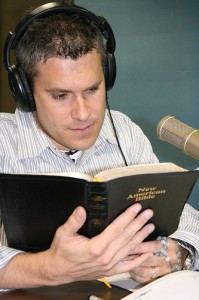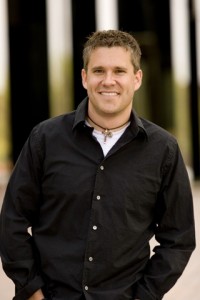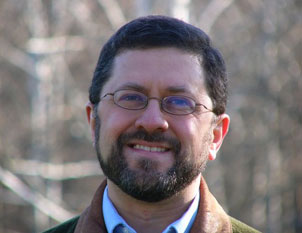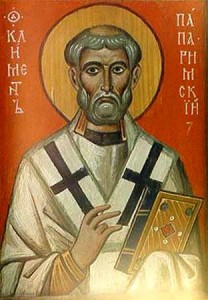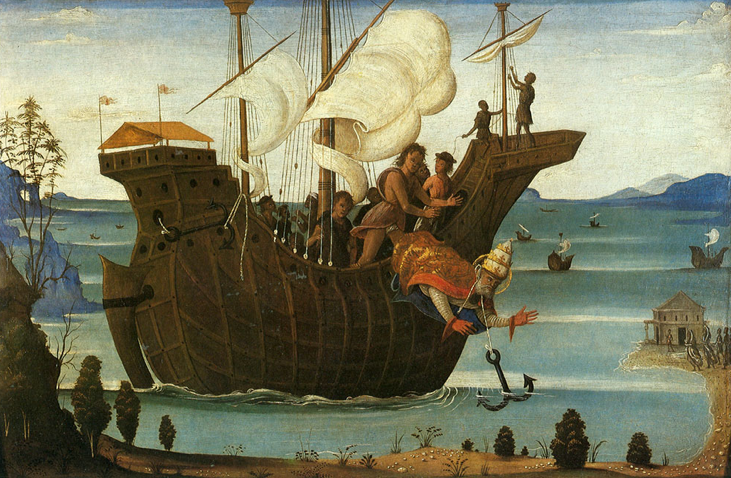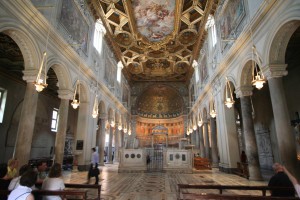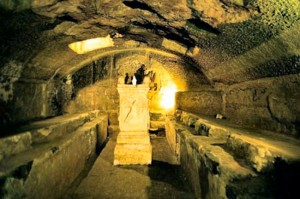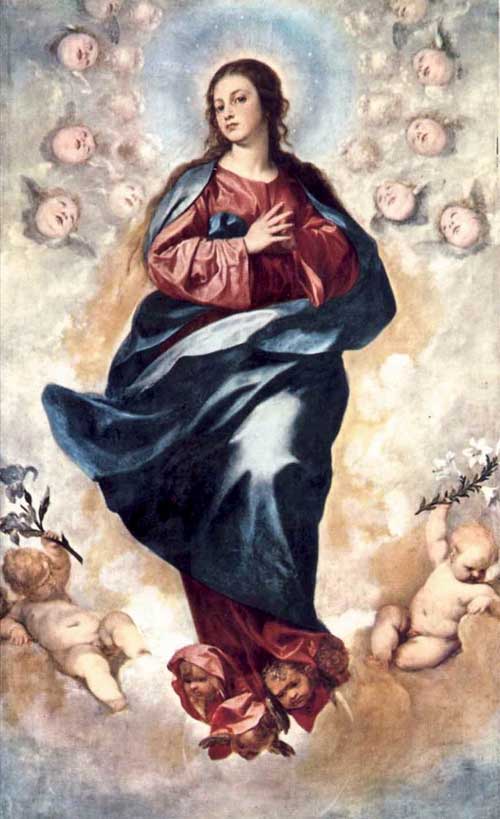Podcast: Play in new window | Download (Duration: 3:43 — 3.4MB) | Embed
Subscribe: Apple Podcasts | Spotify | Amazon Music | Android | Pandora | iHeartRadio | JioSaavn | Podchaser | Gaana | Podcast Index | Email | TuneIn | Deezer | Anghami | RSS | More

The Risen Lord Waits for Us to Call on Him –
a posting which originally appeared on Dr. Lilles’ “Beginning to Pray” website
Jesus, the Risen Lord, is truly present in this moment. In the midst of difficulty or rest, sorrow or joy, He is with us, fully alive, more real than all the rest of reality combined. He is present with great humility and respect: asking as if He were a starving beggar, seeking as if He were the one who had lost something and knocking as if He had no right to enter. He is here, in this moment and in every moment, above all space and time, over all circumstance and trial, waiting for us to open the door.The Victor once and for all, He has been raised and set apart to judge the living and the dead, not in the distant future, but now in the present moment. Only those who are pierced to the heart by love can accept the judgment of His justice and truth, and how I long for my own heart to be pierced so that at last I might know that freedom of love that He alone can give.Spiritual freedom flows from His touch and even now He holds out His hands towards us. Those who believe in Him find forgiveness. Even as we confess our sins and repent of our rash judgments, He silences the voice of condemnation that cries against us.
He has suffered death and passed through hell to restore peace to our troubled consciences because He did not create us for self torment. He has come Himself because He alone has the power and authority to liberate us from such a hellish burden. In Him, we discover that the power of misery is not absolute and that evil does not have the last word. Darkness vanishes before His light. He reigns unconquered and invites us to join Him.
Who will separate us from His love? Who can prevent us from living the life that He has come to give? Worldly powers could not silence Him. Suffering could not diminish Him. Death could not contain Him. Every knee is bent before Him and every head is bowed in His presence. He rules forever at the right hand of the Father.
Against all falsehood, he shines forth forever true. Though winds of false teachings and all kinds of myths seem to hold sway, He is a sure anchor, a safe-harbor in the storm. In the midst of a changing sea of confusion, He stands as the sure reference point of life and every decision. In the midst of rancor and contention, whether within our hearts or in our communities, He is the only true source of peace.
The Word of the Father is the Love that is stronger than death. He is Truth unvanquiahed. He is the living waters of the deep dug well of salvation. He calls in whispers that thunder in our hearts. He gazes on us with love though we have done nothing to deserve it. He hopes in us and rejoices when we raise our eyes to Him if only for a moment. The Lord of Life longs for us to share our hearts with Him freely and to share His heart with us completely in that moment which will have no end.

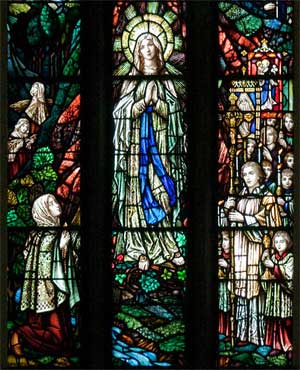
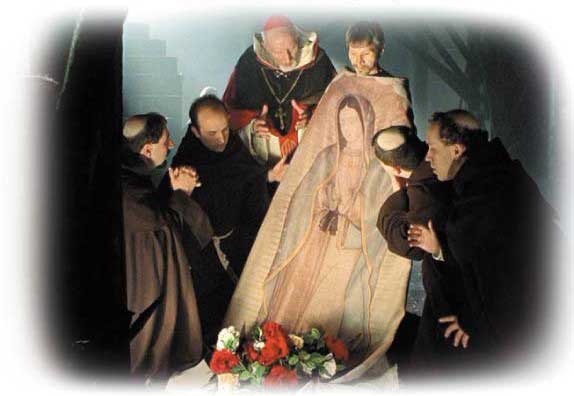 Please visit the
Please visit the 

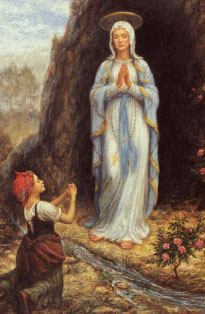 Be blessed, O most pure Virgin, for having vouchsafed to manifest yourself shining with light, sweetness and beauty, in the Grotto of Lourdes, saying to the child Saint Bernadette: “I am the Immaculate Conception!” O Mary Immaculate, inflame our hearts with one ray of the burning love of your pure heart Let them be consumed with love for Jesus and for you, in order that we may merit one day to enjoy your glorious eternity. O dispenser of His graces here below, take into your keeping and present to your Divine Son the petition for which we are making this novena.
Be blessed, O most pure Virgin, for having vouchsafed to manifest yourself shining with light, sweetness and beauty, in the Grotto of Lourdes, saying to the child Saint Bernadette: “I am the Immaculate Conception!” O Mary Immaculate, inflame our hearts with one ray of the burning love of your pure heart Let them be consumed with love for Jesus and for you, in order that we may merit one day to enjoy your glorious eternity. O dispenser of His graces here below, take into your keeping and present to your Divine Son the petition for which we are making this novena.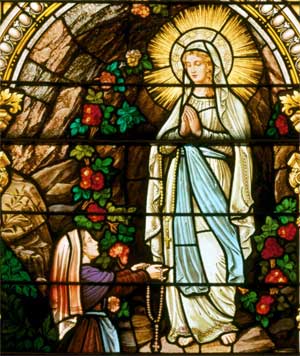 Novena to Our Lady of Lourdes Day 3
Novena to Our Lady of Lourdes Day 3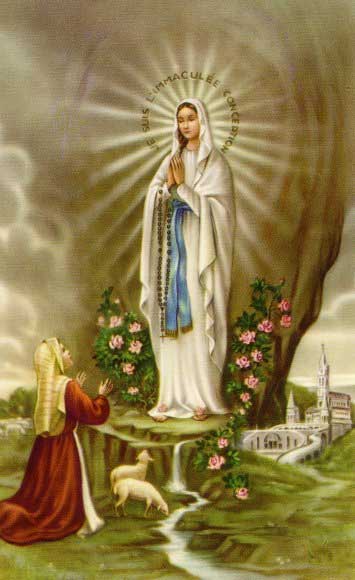
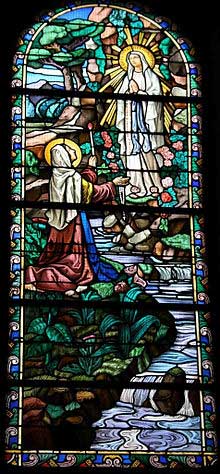 Novena to Our Lady of Lourdes – Day 6
Novena to Our Lady of Lourdes – Day 6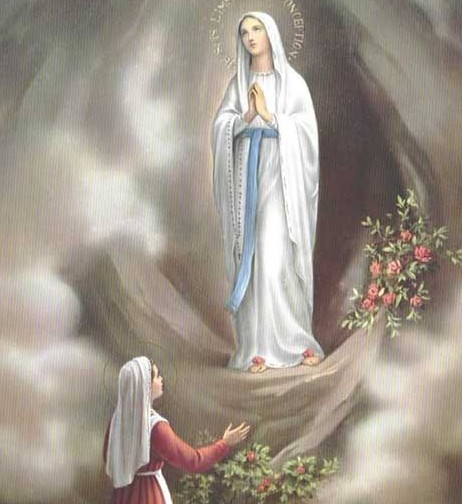 O Almighty God, who by the Immaculate Conception of the Blessed Virgin Mary did prepare a worthy dwelling place for your Son, we humbly beseech you that as we contemplate the apparition of Our Lady in the Grotto of Lourdes, we may be blessed with health of mind and body. O most gracious Mother Mary, beloved Mother of Our Lord and Redeemer, look with favor upon us as you did that day on Bernadette and intercede with him for us that the favor we now so earnestly seek may be granted to us.
O Almighty God, who by the Immaculate Conception of the Blessed Virgin Mary did prepare a worthy dwelling place for your Son, we humbly beseech you that as we contemplate the apparition of Our Lady in the Grotto of Lourdes, we may be blessed with health of mind and body. O most gracious Mother Mary, beloved Mother of Our Lord and Redeemer, look with favor upon us as you did that day on Bernadette and intercede with him for us that the favor we now so earnestly seek may be granted to us.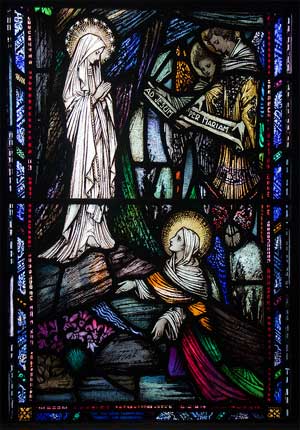 O Immaculate Mother of God, from heaven itself you came to appear to the little Bernadette in the rough Grotto of Lourdes! And as Bernadette knelt at your feet and the miraculous spring burst forth and as multitudes have knelt ever since before your shrine, O Mother of God, we kneel before you today to ask that in your mercy you plead with your Divine Son to grant the special favor we seek in this novena.
O Immaculate Mother of God, from heaven itself you came to appear to the little Bernadette in the rough Grotto of Lourdes! And as Bernadette knelt at your feet and the miraculous spring burst forth and as multitudes have knelt ever since before your shrine, O Mother of God, we kneel before you today to ask that in your mercy you plead with your Divine Son to grant the special favor we seek in this novena. O glorious Mother of God, to you we raise our hearts and hands to implore your powerful intercession in obtaining from the benign Heart of Jesus all the graces necessary for our spiritual and temporal welfare, particularly for the grace of a happy death. O Mother of our Divine Lord, as we conclude this novena for the special favor we seek at this time.
O glorious Mother of God, to you we raise our hearts and hands to implore your powerful intercession in obtaining from the benign Heart of Jesus all the graces necessary for our spiritual and temporal welfare, particularly for the grace of a happy death. O Mother of our Divine Lord, as we conclude this novena for the special favor we seek at this time.